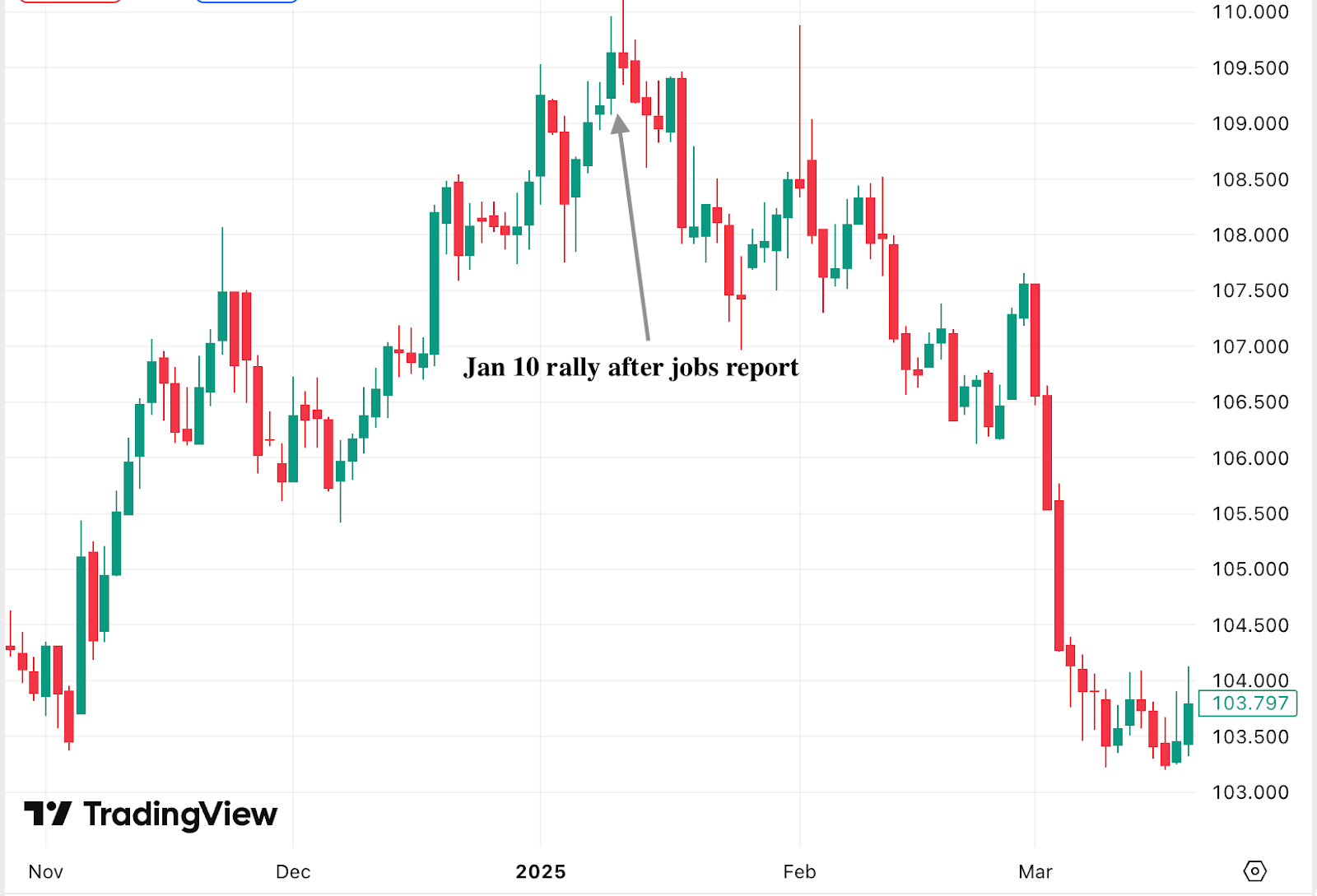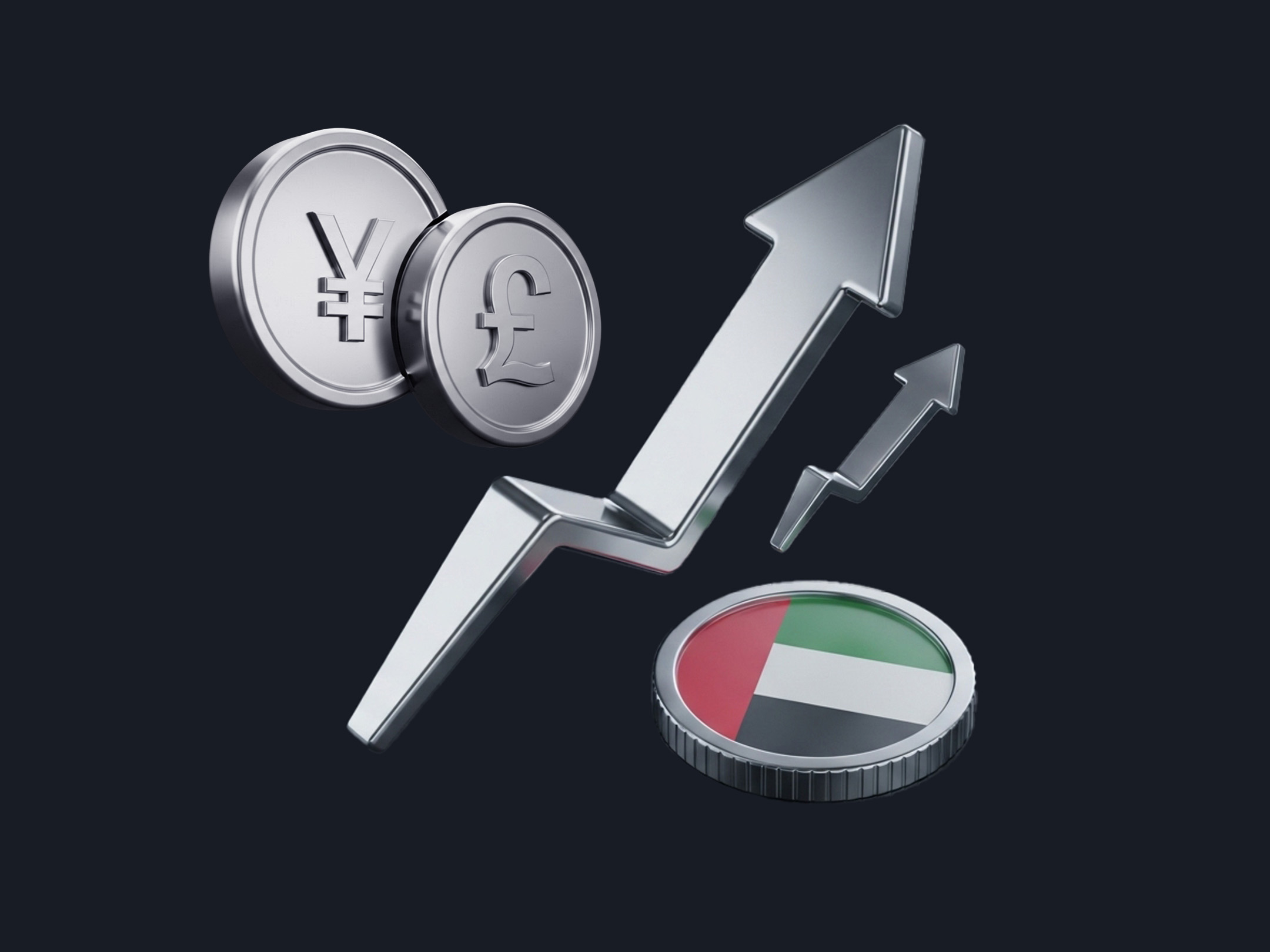%20news%20and%20why%20they%20matter%20to%20traders%20(coral)%20v01%20(1).png)
The Non-Farm Payroll (NFP) report is a monthly U.S. jobs report that measures how many paid workers were added or lost in the economy, excluding farm employees, government staff, private household workers, and non-profit employees. Released by the Bureau of Labour Statistics at 8:30 AM EST on the first Friday of each month, it highlights three key figures: the headline jobs number, the unemployment rate, and average hourly earnings.
Quick summary
- NFP reflects monthly changes in U.S. employment (ex-farm, gov, household, non-profits).
- Accompanied by key data: Unemployment rate and Average hourly earnings.
- A core input for assessing U.S. economic health and Fed policy outlook.
- Causes sharp volatility in USD pairs, commodities, and equity indices.
The importance Non-Farm Payroll reports
NFP data reveals the pace of job creation in the U.S. economy - a critical input for monetary policy. It signals the health of economic momentum, inflationary risks, and Fed interest rate direction. A stronger-than-expected print typically signals growth and may lead to tighter policy; a weaker result often suggests easing.
Example: In May 2025, the NFP added 177,000 jobs vs. 138,000 expected. USD/JPY spiked higher but reversed sharply, dropping over 200 pips. The initial move faded as markets focused on wage growth and potential Fed policy shifts.

NFP trading can be high risk/high reward, and traders seek to master it for its volatility-driven opportunities.
Why is NFP valuable to forex traders?
NFP is a critical event for forex traders because of its immediate and far-reaching impact on USD valuation. The report affects currency volatility and offers insight into Federal Reserve policy direction.
First, a strong NFP figure typically lifts the dollar, as it supports the case for tighter monetary policy. Conversely, weak numbers signal economic softness, leading to a weaker dollar as traders anticipate rate cuts. Key forex pairs like EUR/USD, USD/JPY, and GBP/USD tend to react most sharply.
Second, the report’s wage growth and unemployment rate data help traders assess inflationary pressures. For instance, high job creation with stagnant wages might not shift the Fed’s stance. But if wage growth accelerates unexpectedly, inflation expectations rise, driving USD strength.
Finally, traders look beyond the headline to detect market sentiment shifts. The full report - including revisions to past data and sector-specific job creation - offers deeper context that professional traders use to anticipate the Fed’s next move.
How does Non-Farm Payroll affect the forex and stock markets?
NFP functions as a shockwave across multiple asset classes. In the forex market, it’s one of the few reports capable of pushing major USD pairs hundreds of pips in minutes. If the result beats or misses forecasts by a wide margin, currency traders quickly reposition based on revised expectations for interest rates.
In equities, the effect is more nuanced. A strong report can fuel optimism about economic growth, boosting stock prices. However, if the market sees the report as inflationary, it could raise concerns that the Fed might tighten too aggressively - a negative for stocks. On the flip side, a weak jobs number could lift stocks on hopes of rate cuts or hurt them if it suggests broader economic weakness.
Different sectors also respond differently. Manufacturing and goods-producing jobs often lead cyclical reactions, while service-based employment, which makes up the majority of U.S. jobs, reflects broader economic activity. Traders also dissect which sectors added or lost jobs to interpret the sustainability of any trend.
How to trade forex in the UAE using Non-Farm Payroll data
Trading around NFP requires precision, patience, and a solid risk management plan. One common mistake is rushing into the market immediately after the release. The initial reaction - often a spike or dip - can be reversed within minutes.
A more effective approach is to let the dust settle. Waiting 1–3 hours after the release can reveal the market’s true direction. Traders then enter positions once a clear trend is confirmed using technical indicators like moving averages or support/resistance breakouts.
Popular strategies include breakout trades, where traders capitalise on price surges beyond key levels, and the fade-the-move method, which targets reversals after overreactions. Others use the pullback strategy - waiting for price to retrace before entering with the trend.
Experienced traders may also use conditional orders such as OCOs (One Cancels the Other) to plan for either direction. It’s critical to compare actual data to both forecasts and previous months, and monitor secondary figures like wage growth and revisions.
How does NFP affect the forex market?
Forex markets often react immediately to NFP surprises. A strong jobs report - particularly one that exceeds expectations by more than 50,000 - can trigger an immediate dollar rally. Take this chart formation from 10 January this year (2025):

This happens as traders expect higher rates and increased yield attractiveness of U.S. assets.
However, volatility is not just a product of the headline figure. Wage inflation data and unemployment figures contribute heavily to market reactions. High wage growth often signals tightening conditions, boosting the USD, while weak earnings may blunt an otherwise strong headline number.
In practice, traders may choose to avoid the release itself due to unpredictable moves and widen spreads. Some close positions beforehand, while others wait for patterns to emerge post-release. Those following a scalping strategy may engage immediately, but trend traders often wait for consolidation before taking a position.
What happens if NFP is high?
A higher-than-expected NFP figure typically signals strength in the U.S. economy. This often leads to USD appreciation as investors price in the potential for rate hikes. Stock markets can react in mixed ways - they may rise on economic optimism or fall on fears of tighter monetary policy.
The extent of market impact depends on how far the actual result deviates from expectations. A mild beat may already be priced in, triggering little movement. But a significant surprise - whether positive or negative - tends to produce strong directional moves.
Traders prepare by studying forecasts and setting trade ranges. Tools like OCO orders or straddle setups allow them to respond instantly to breakouts. The key is understanding that initial spikes can reverse, and managing risk accordingly with wider stops and smaller position sizes.
What are the best trading strategies around the NFP release?
The most successful NFP traders often avoid the initial chaos. Instead, they observe the market for a few hours to gauge sentiment and establish direction. Using smaller positions with wider stops helps account for post-release volatility.
Technical confirmation is key. Whether it’s a moving average crossover, a trendline break, or a support/resistance level breach, waiting for structure helps avoid false signals. Watching wage growth and unemployment alongside the headline figure can offer context for the move.
Some traders pre-position small directional trades before the release, then add once confirmation is seen. Others rely on strategies like breakouts and pullbacks. Whichever approach is used, proper risk management and patience are essential.
Using the economic calendar for NFP
An economic calendar is a trader’s best friend during NFP week. It provides the exact release time, prior figures, consensus expectations, and often includes analyst commentary.
To use it effectively:
- Note the release time in your local timezone.
- Compare actual numbers to forecasts and previous results.
- Set alerts ahead of time to avoid being caught off guard.
Managing trading risk during economic news releases
Volatility can spike within seconds of the NFP release, leading to slippage, stop-outs, or widened spreads. To navigate this, traders should reduce position size, use wider stop-loss levels, and avoid over-leveraging.
Deriv platforms offer risk protection features like stop-loss orders, contract limits, and margin monitoring. It is highly recommended that traders practice their approach on a demo account, especially for traders new to high-impact events like NFP.
Key tips for trading NFP events
- Stay out during the initial spike unless you’re highly experienced.
- Wait for confirmation and reduced volatility before entering.
- Use tools like ATR or Bollinger Bands to set realistic stops.
- Always trade with a plan — don’t react emotionally.
Navigating NFP while trading on Deriv
Trading the NFP release is both a challenge and an opportunity. With the right strategy, preparation, and execution, traders can take advantage of the volatility while minimising unnecessary risk.
To succeed:
- Study the full NFP report, not just the headline.
- Use an economic calendar to plan ahead.
- Wait for market direction to stabilise before entering.
- Practise strategies in a risk-free demo environment before going live.
Quiz
Which of the following is NOT included in the Non-Farm Payroll (NFP) report’s total jobs figure?


















